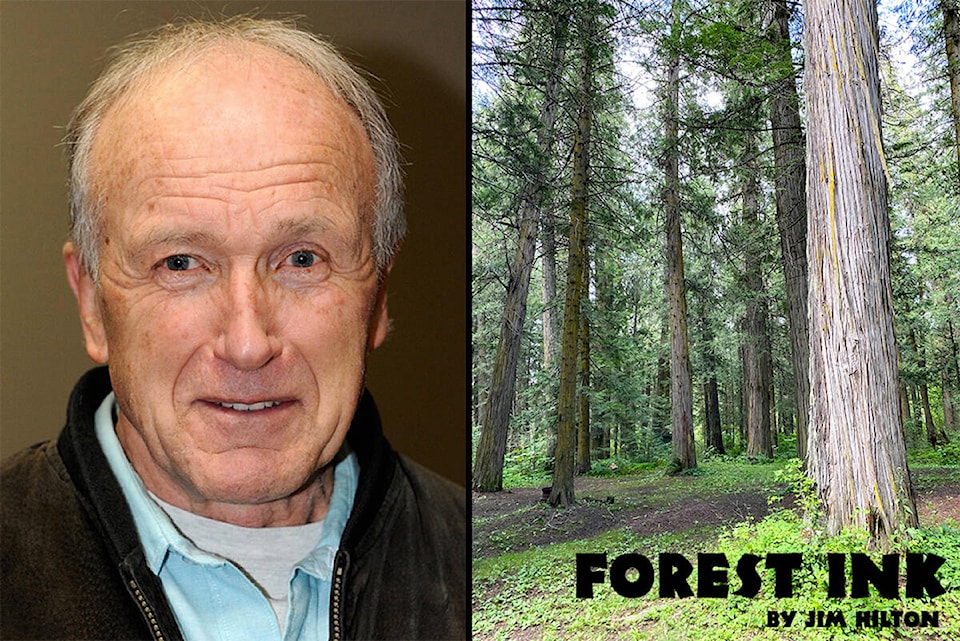With all the restrictions on travelling and impacts of climate change maybe it is time to think about visiting some unique areas in our own backyard. We usually think of our giant trees on the coast when talking of ancient forests not the old short stunted boreal forests but that all changed for me after listing to a CBC interview with Edward Struzik about his new book “ Swamplands.”
His enthusiasm was infectious as he described his river trips down the Mackenzie and the Thomsen rivers on Banks Island where he saw musk oxen along with caribou and the associated predators of wolves, bears and foxes.
The surrounding wetlands and small ponds contained the usual sandhill cranes, snow geese and a variety of ducks and other water birds.
If you appreciate plants you will be able to find some of the rarest and most beautiful in the world but don’t forget to include a sturdy bug jacket and hat so that you can enjoy all of the wildlife, many edible plants and some of the best fishing if you remembered to include your gear.
READ MORE: The bird is the word: birding takes flight in Quesnel
The boreal forest (or “taiga”) is the world’s largest land biome.
The boreal ecozone principally spans 8 countries: Canada, China, Finland, Japan, Norway, Russia, Sweden and the United States (Alaska). It is typically comprised of coniferous tree species such as pine, spruce and fir with some broadleaf species such as poplar and birch. The circumboreal belt of forest represents about 30 per cent of the global forest area and contains more surface freshwater than any other biome.
From a biological perspective, boreal forests are defined as forests growing in high-latitude environments where freezing temperatures occur for six to eight months and trees are capable of reaching a minimum height of five metres and a canopy cover of 10 per cent.
While there is some industrial forest resources, it is the potential of rare minerals, peat and abundant clean water and tourism that will likely have the most significance. Hopefully we have learned ways to carry out extraction of these resources while minimizing impacts on the water and ecological potential of these fragile landscapes.
As far as advancing the tourism industry we would be advised to see what Nordic countries have done.
Nordic countries consist of a lot of stunning national parks and other protected areas, which tourists feel free to access and enjoy.
Countries like Sweden and Norway have created a law guaranteeing free access rights to nature. The principles of ecotourism include minimizing environmental impact, building environmental and cultural awareness and respect, providing positive experiences for both visitors and hosts, providing direct financial benefits for conservation and for local people, raising sensitivity to host countries’ political, environmental, and social climates and supporting international human rights and labour agreements.
My vision would be to increase our presence in the north following the Nordic principles which would include joint ventures with industrial development and government research which will no doubt be taking place. Having a tourism component should help ensure the natural resources including the first nations were being taken into account.
Jim Hilton is a professional agrologist and forester who has lived and worked in the Cariboo Chilcotin for the past 40 years. Now retired, Hilton still volunteers his skills with local community forests organizations.
Do you have something to add to this story, or something else we should report on? Email: cassidy.dankochik@quesnelobserver.com
@GimliJetsMan
cassidy.dankochik@quesnelobserver.com
Like us on Facebook and follow us on Twitter.
